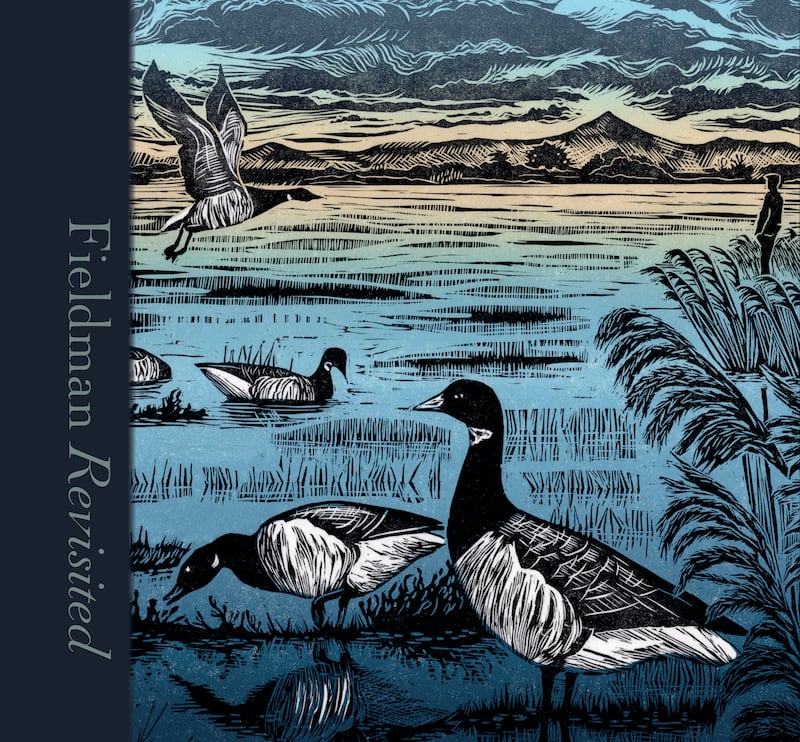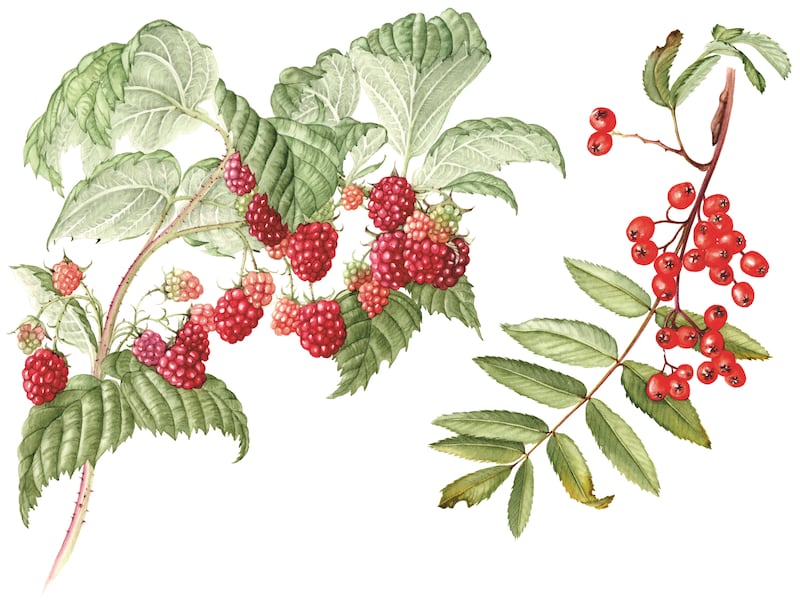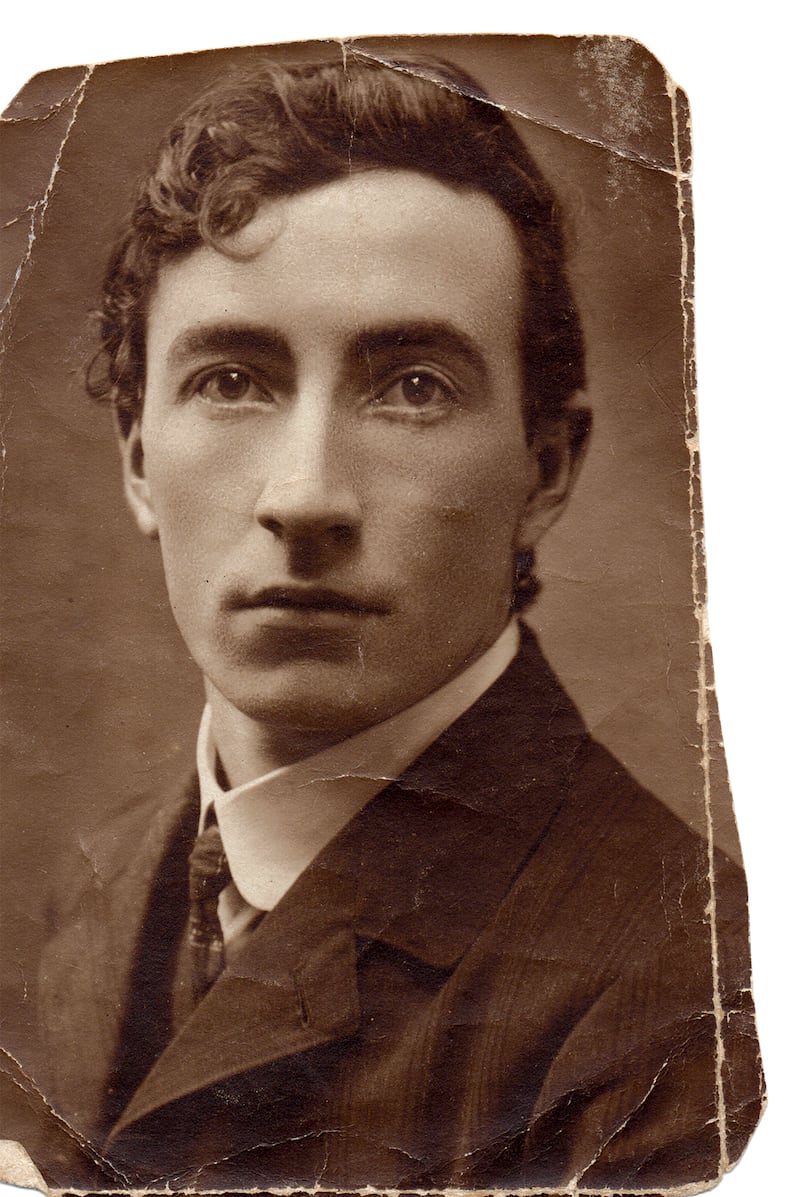For the first time in decades I heard a cuckoo just the other day, its pealing “Wuck-Koo” ringing out so loudly nearby that I felt a quick, sharp jolt of joy at being so closely in its presence. Once a common sound, the distinctive call of this fleeting seasonal migrant from tropical Africa is traditionally believed to signal the arrival of spring. But as is true of so many other once-common species of birds, its numbers, which are down by an estimated 27 per cent since the early 1970s, have been in slow but steady decline for decades.
Someone familiar with the cuckoo’s seasonal call was the Wexford-born writer Larry de Lacy, aka “Fieldman”. His weekly nature column for the Irish Independent over a 45-year period until shortly before his death in 1973 is the subject of a beautiful and engrossing new book, printed in Ireland and published this month by VS Publishing.
Arranged in the form of a nature diary spanning a calendar year, each entry features a seasonal extract taken from de Lacy’s long-running column (the chosen extracts span the period from 1937-1948) and is accompanied by exquisite illustrations of the flora and fauna of which he writes so evocatively. Produced by a coterie of 18 noted Irish artists including Susan Sex and de Lacy’s own granddaughter Marie de Lacy, they were commissioned especially for the book.
It’s Susan Sex’s charming illustration of the curiously magical cuckoo that accompanies the entry for May 1st, 1940, where Fieldman writes of how “from some sequestered place the flute voice of the Cuckoo, rich with old memories, is repeated in a faint echo that is laden with the languors of midsummer…”.
READ MORE
Fieldman Revisited charts the unfolding of the Irish natural year, each month’s wildflowers and wildlife, in a way that brings it magically to life. By the time of the book’s entry for June 29th (originally published in his column in 1942), the cuckoo has fled Ireland for hotter climes and de Lacy writes of the wildflowers in bloom that include “blossomy clover”, the carmine-coloured flower spires of wild willowherb, vetch, and cranesbill, as well as the wild corncockles “just beginning to flower waist-high amid the corn”.

Few of us are likely to have seen corncockles growing in cornfields (the result of widespread use of herbicides), and so this particular description is a poignant one, reminding us of the painful loss of biodiversity from the Irish landscape as well as the impromptu natural beauty once enjoyed by previous generations.
[ Nature restoration law will affect almost 9% of Irish landOpens in new window ]
But Fieldman Revisited is also a powerful reminder that so much of the wild flora and fauna of which de Lacy writes remains both reassuringly familiar and dear to us, each fresh sighting still treasured as a sign that the naturally fleeting nature of the cycle of the seasons endures. In this way, his words reach out to us across the decades that separate us from his lifetime – a reassuring voice whose experiences of Irish nature echo our own.

In that same diary entry for June 29th, for example, de Lacy writes of the “six-spotted Burnet Moth” feeding on trefoil, a brightly coloured species of moth still common to this day. In the book’s diary entries for the month of July, he writes of the wild rosehips slowly colouring in the hedgerows, the sweet, heavy scent of wild honeysuckle in bloom, young swallows exulting in the joy of flight, the different species of wild orchid, and how “the night mists that lie upon the meadows are tinged with old gold amongst the silver”.
Marie de Lacy’s key role aside, it’s fair to say this crowdfunded book is the work of many – an important coming together of talents partially made possible by the enforced seclusion of the pandemic
Come August, it’s the turn of wild raspberries and scarlet mountain-ash berries, of butterflies and wild thyme, of finches fluttering above the ripening corn and poppies spilling their scarlet petals. On each page, de Lacy’s poetically beautiful entries have been masterfully paired with the paintings that bring them so immediately and vividly to life. We can see the grey heron or Cort réise, the black-headed gulls, kingfisher, sparrowhawk, bullfinch, goldfinches and wrens, of which he writes with such affection. Similarly, we can recognise the common wildflowers, the sleepy trout basking in the shallow water, and the mayflies dancing above its head.
Interestingly, his nature writing reflects only one side of the man readers knew as Fieldman. As a young man, de Lacy’s involvement in the Irish revolutionary movement, audacious escape to America, and subsequent imprisonment in the Curragh during the Irish Civil War of 1922-1923 are also part of the story of his long and richly patterned life – one shaped by the many tumultuous political, cultural and social changes taking place. Among those sea changes was a literary revival that brought a radically reawakened interest in the Irish language, reconnecting a new generation of nature lovers including de Lacy with the rich history of Irish plant lore and the etymology of its field and placenames.
[ The curlew’s call is giving way to silence but not everyone is giving upOpens in new window ]


Even so, his nature columns might have been forgotten with the passing of time was it not for the dedication of his granddaughter Marie, who was determined to introduce them to a new generation unfamiliar with his writing. In doing so, she has ensured that de Lacy’s work is again recognised as part of a distinguished tradition that stretches right back in time to the bards of ancient Ireland and the songs of kings.
[ What impact will the EU nature restoration law have on Ireland?Opens in new window ]
Marie de Lacy’s key role aside, it’s fair to say this crowdfunded book is the work of many – an important coming together of talents partially made possible by the enforced seclusion of the pandemic. The botanical artist Susan Sex not only contributed her illustrations but, as one of the book’s editors, also did a huge amount to help steer and complete the project, as did the distinguished gardener, author and orchid expert Brendan Sayers, who also contributed an important essay on the loss of biodiversity viewed through the prism of de Lacy’s writings. Meanwhile, the book’s exceptional design is the work of Sanja Todorovic. Each page sings with beauty, each illustration is a hymn to the glories of the natural world and the many riches that it’s home to. Destined to become a collector’s item, it’s a book to cherish.
This Week
What a difference a week makes. Dare I say it, gardeners may even need to keep a very careful eye on glasshouse and polytunnel-grown crops to make sure they’re kept well-ventilated and watered.
As this summer’s first flush of roses starts to come to an end, keep regularly deadheading the plants. To encourage repeat-flowering varieties to reflower, give them regular liquid feeds and top-dress around the roots by sprinkling a couple of handfuls of slow-release organic fertiliser.
Dates for your Diary
Saturday, July 6th-Sunday July 7th (11am-6pm), Galway Garden Festival, Claregalway Castle, Claregalway, Co Galway, with a wonderful range of specialist plant nurseries, exhibitions of Irish botanical art, and guest speakers Klaus Laitenberger, Jimi Blake, Karen Williams, and Fionnuala Fallon, see galwaygardenfestival.com.















